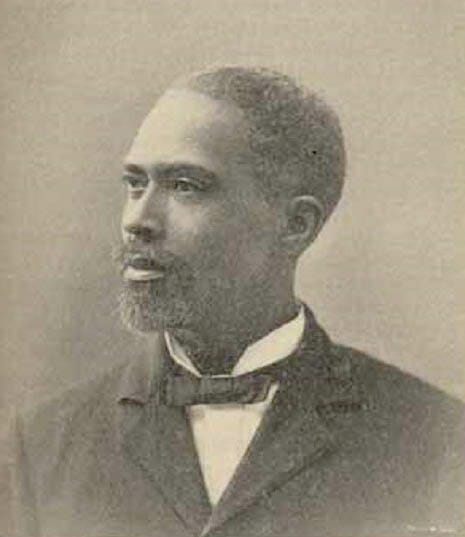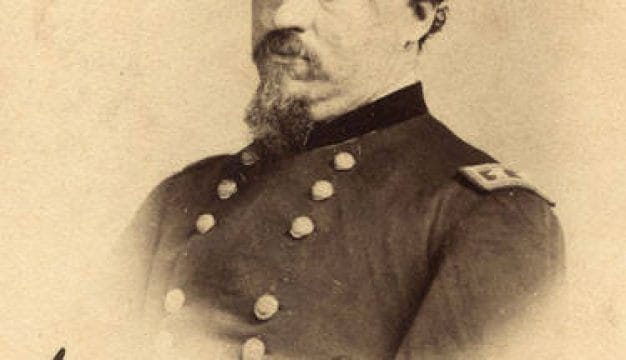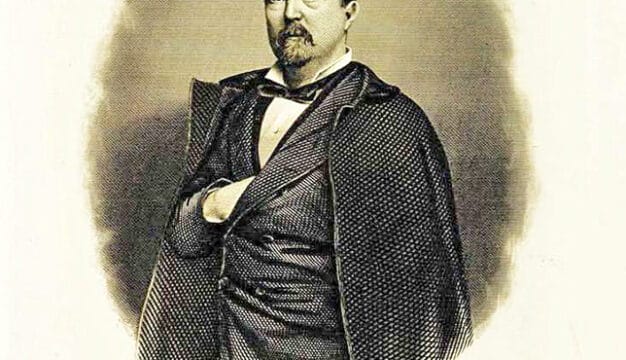Penny Savings Bank of Birmingham
The Penny Savings Bank, founded by Reverend William Reuben Pettiford in Birmingham in 1890, was the first black-owned and black-operated financial institution in Alabama. Created as a necessity of de facto and later codified segregation, the bank backed and encouraged development of black businesses, especially in urban areas, as well as savings by African Americans, until its closing in 1915.
 William Reuben Pettiford
William Reuben Pettiford was born to free parents in North Carolina in 1847. He moved to Alabama in 1869 to seek better educational and financial opportunities. After seven years of studying while holding down jobs, Pettiford completed his degree at the Lincoln Normal School (a predecessor of Alabama State University) in Marion, Perry County. In 1877, Pettiford became a teacher at Selma University and simultaneously entered the theological department of the school, taking courses from Pres. Harrison Woodsmall. Three years later, he voluntarily severed his connection with the school to become pastor of the First Baptist Church of Union Springs, where he also served as principal of the city school for African Americans. In 1883, he accepted the pastorate of the First Colored Baptist Church of Birmingham, later named the Sixteenth Street Baptist Church, at the urging of state Baptist leaders and educator Booker T. Washington, who assured him that he could provide necessary leadership for Birmingham’s expanding black population.
William Reuben Pettiford
William Reuben Pettiford was born to free parents in North Carolina in 1847. He moved to Alabama in 1869 to seek better educational and financial opportunities. After seven years of studying while holding down jobs, Pettiford completed his degree at the Lincoln Normal School (a predecessor of Alabama State University) in Marion, Perry County. In 1877, Pettiford became a teacher at Selma University and simultaneously entered the theological department of the school, taking courses from Pres. Harrison Woodsmall. Three years later, he voluntarily severed his connection with the school to become pastor of the First Baptist Church of Union Springs, where he also served as principal of the city school for African Americans. In 1883, he accepted the pastorate of the First Colored Baptist Church of Birmingham, later named the Sixteenth Street Baptist Church, at the urging of state Baptist leaders and educator Booker T. Washington, who assured him that he could provide necessary leadership for Birmingham’s expanding black population.
Pettiford’s motivation to establish the Penny Savings Bank came from several sources, including his former position as financial agent for Selma University and his growing friendship with Booker T. Washington, who was a strong advocate of thrift and self-help for the black community. Pettiford related how, while riding a streetcar one Friday night, he observed an African American woman drinking whisky after receiving her weekly pay. That experience led him to think about establishing a business where blacks could save their money rather than waste it. Another impetus came from William Washington Browne, president of the black-owned Savings Bank of the Grand Fountain United Order of True Reformers of Richmond, Virginia, who expressed an interest in opening a branch of his bank in Birmingham. Rather than letting an outsider establish a bank, Pettiford and the local black leaders, including J. O. Diffay, N. B. Smith, T. W. Walker, Peter F. Clarke, B. H. Hudson, and A. H. Parker, decided that they could do a better job.
 Penny Savings Bank
To ensure the bank’s success, Pettiford and several other community leaders engaged in a three-month campaign of education, speeches, and advertising. The Alabama Penny Savings company opened its doors on October 15, 1890, with William Pettiford as its president. It received on deposit that day $555, which, along with the $2,000 already paid in from the sale of stock, constituted its working capital. The bank was not incorporated until 1895, when it finally accumulated the $25,000 in cash assets that was required under Alabama laws of the 1890s. Because of its success in Birmingham, officials of the Penny Bank later established branches in Selma, Anniston, and Montgomery. Although the bank achieved success, some African Americans distrusted black-operated banks because of the failure of the Freedmen’s Bureau Bank in 1873.
Penny Savings Bank
To ensure the bank’s success, Pettiford and several other community leaders engaged in a three-month campaign of education, speeches, and advertising. The Alabama Penny Savings company opened its doors on October 15, 1890, with William Pettiford as its president. It received on deposit that day $555, which, along with the $2,000 already paid in from the sale of stock, constituted its working capital. The bank was not incorporated until 1895, when it finally accumulated the $25,000 in cash assets that was required under Alabama laws of the 1890s. Because of its success in Birmingham, officials of the Penny Bank later established branches in Selma, Anniston, and Montgomery. Although the bank achieved success, some African Americans distrusted black-operated banks because of the failure of the Freedmen’s Bureau Bank in 1873.
Like Booker T. Washington, Pettiford believed in self-help and racial solidarity. Because he also agreed with Washington’s emphasis on developing partnerships with powerful whites, Pettiford established working relationships with white bankers. He obtained assistance from Birmingham’s white financial institutions to train his workers in bookkeeping and banking procedures. Administrative help from the Steiner Brothers Bank appears to have been the major factor in the Penny Bank’s ability to survive the economic crisis of 1893, when even some white banks failed.
As a member of Booker T. Washington’s Business League, Pettiford helped organize the National Negro Banker’s Association in 1906 and served as its president until his death. The organization’s stated purpose was to foster and encourage the establishment of black-owned banks and support those already in existence. Pettiford travelled throughout the South to assist in the establishment of black banks and became the nation’s leading figure in the African American bank movement.
Under Pettiford’s management, the Penny Bank continued to grow. On July 15, 1902, the deposits were $78,124.21; by October 1911, they had reached $421,596.51. Much of the bank’s success resulted from Pettiford’s and the directors’ emphasis on homeownership. Records show that the Penny Bank was the leading mortgager to persons buying homes in Smithfield, the most prominent black community in Birmingham. In addition, during the bank’s first decade, Pettiford and other officials engineered many real estate transactions that proved highly lucrative for the bank.
In 1913, the Penny Bank constructed its own building on Eighteenth Street in Birmingham’s thriving business district. The five-story building housed other black businesses on its upper floors. Of its 64 rooms, businesses occupied all of them except one, paying a total of $8,000 in rent to the Penny Savings Bank. The building represented a tangible demonstration of the director’s philosophy of self-help and economic solidarity: African Americans cooperating to assist other African Americans.
By the time of Pettiford’s death in 1914, the Alabama Penny Savings Bank was the largest and strongest African American owned bank in the United States, doing business in excess of $500,000. In 1915, the bank merged with another black-owned bank, Prudential Savings, and became the Alabama Penny-Prudential Savings Bank, with J. O. Diffay as acting president.
Despite the Penny Bank’s success and its merger, the institution failed in 1915, less than one year after Pettiford’s death. The likely reason for its failure was the absence of Pettiford, who had nurtured a unique relationship with the larger banks, and during times of financial crisis no one could convince these financial institutions to lend assistance as Pettiford had done in the past. As a result, the Alabama Penny Savings Bank was forced to liquidate its assets and sell its $150,000 building to the Knights of Pythias for $70,000. Despite its rather short life of 25 years, the Penny Bank contributed in great part to the black ownership of homes, the building of churches and businesses, and teaching many African Americans in the city how to properly manage their financial resources.
Additional Resources
Boothe, Charles Octavius. The Cyclopedia of the Colored Baptists of Alabama: Their Leaders and Their Work. Birmingham: Alabama Publishing Company, 1895.
Feldmen, Lynne B. “Black Business in Birmingham, Alabama.” Master’s thesis, Florida State University, 1993.
Fallin, Wilson, Jr. The African American Church in Birmingham, 1815-1963: A Shelter in the Storm. New York: Garland Publishing Company, 1995
———. Uplifting the People: Three Centuries of Black Baptists in Alabama.Tuscaloosa: University of Alabama Press, 2007.



